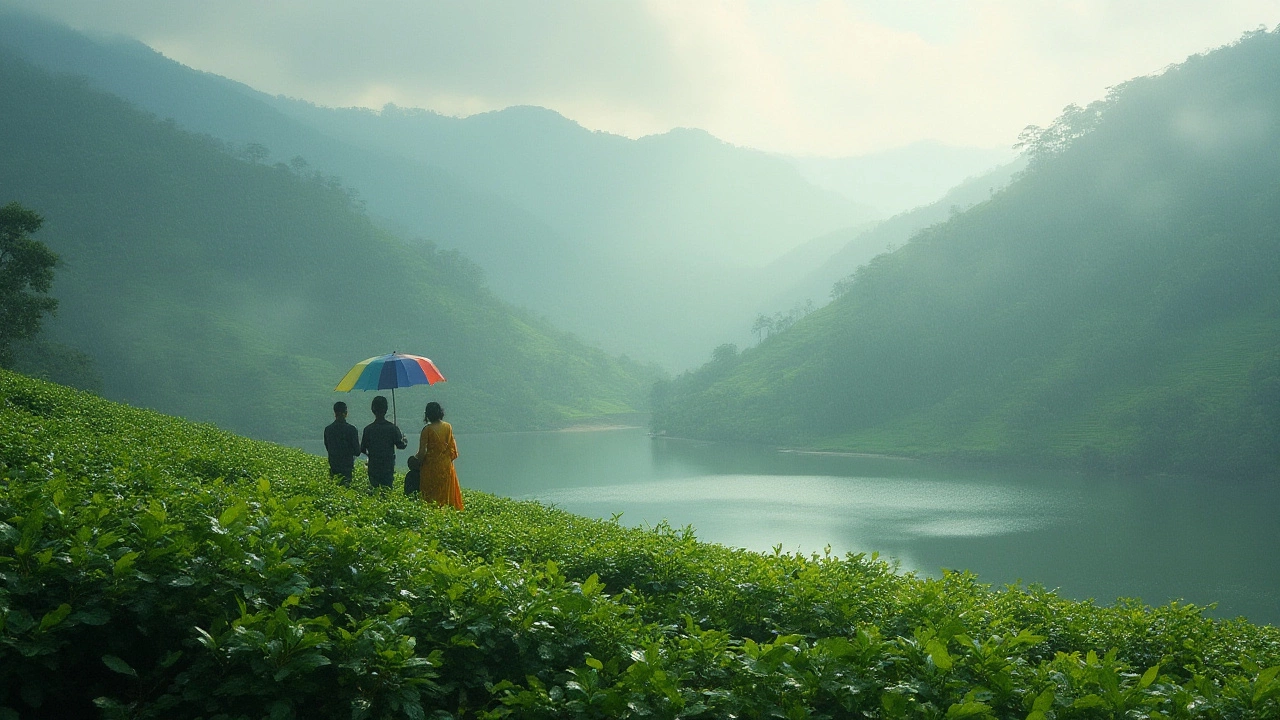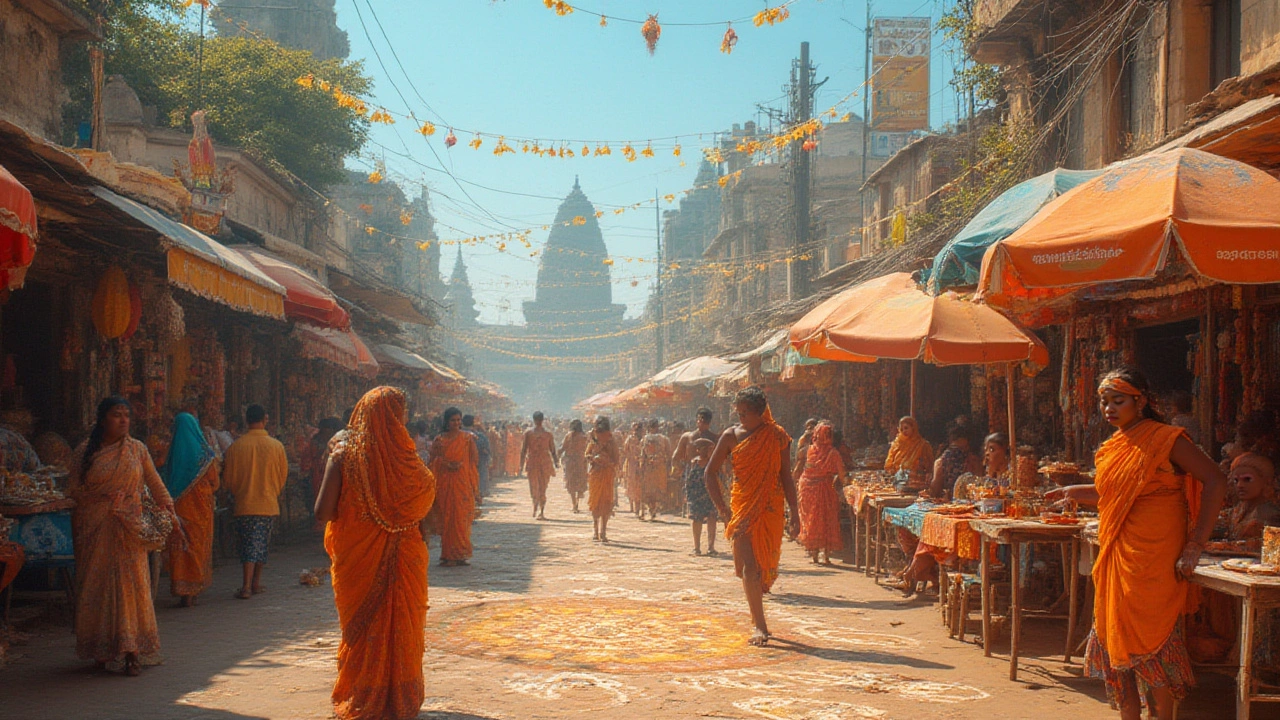Ever tried walking through a vibrant Indian street with the sun beating down so fiercely, you start dreaming of cold showers and ice lollies? Tamil Nadu in the middle of a scorching summer feels exactly like that. But then, picture joining a lively temple festival, the scent of jasmine in the air, glittering silk saris everywhere, and a cooling night breeze sweeping through—suddenly it feels like you’re exactly where you belong. The best time to visit Tamil Nadu isn’t just about avoiding the heat; it’s about catching those moments when the state truly shows its colors. Timing can make all the difference between a sticky, uncomfortable trip and one that leaves you breathless with stories.
Tamil Nadu’s Weather Rollercoaster: What to Expect Year-Round
Weather isn’t just small talk here—it’s how locals plan weddings, markets, and cricket matches. Tamil Nadu sits in the southeastern corner of India, kissed by both the Bay of Bengal and a cascade of rolling hills. Climatically, it stands out from the rest of India. Thanks to the Eastern Ghats to the north and the Western Ghats to the west, the state has a rain shadow effect that keeps it drier than neighboring Kerala. Still, it doesn’t mean you’re safe from dramatic monsoons.
There are three main seasons:
- Winter (November – February): The air cools down, humidity drops, and evenings become balmy. Temperatures hover between 19°C and 25°C (66°F to 77°F). Actually chilly mornings can happen, especially in hill stations like Ooty or Kodaikanal, where you’ll want a light sweater.
- Summer (March – June): Tamil Nadu turns into a sizzler. It’s not just the temperature, averaging 32°C to 40°C (89°F to 104°F), but the relentless sun. Chennai, in particular, can feel like a pressure cooker. Inland and coastal towns don’t fare much better, but the Nilgiris remain cooler.
- Monsoon (June – September for Southwest, October – December for Northeast): Tamil Nadu gets most of its rain from the Northeast monsoon. Expect heavy, sporadic showers, flooding in low-lying areas, and lush, green countryside. Hills and forests look absolutely stunning, but beach days get hit and miss.
| Season | Average Temperature (°C) | Rainfall (mm/month) |
|---|---|---|
| Winter | 19–25 | 30–60 |
| Summer | 32–40 | 10–20 |
| Southwest Monsoon | 26–33 | 60–120 |
| Northeast Monsoon | 24–30 | 150–350 |
What’s a trip if you’re battling dehydration nonstop? Peak summer isn’t for the faint-hearted. Locals even take afternoon siestas, curtains drawn against the blaze. Most travelers head north or up the mountains. The real travel sweet spot: late November to early March. This window gives you balmy days, pleasant nights, and less rain risk. The beach is actually inviting, and temple town strolls won’t turn into a sweat test. But if you love the monsoon's drama—roaring rivers, fresh paddy fields, waterfalls thundering from rocks—visit right after the first heavy showers and you’ll see the state in its most energetic mood.
Festival Fever: Why Culture and Celebration Matter
If you think weather matters, wait until you see the faces of locals during festival season—a whole different level of joy. Tamil Nadu is obsessed with rituals, colors, classical music, and processions. Most festivals run on the lunar calendar, which means dates shift every year. Miss these and you’ll only get half the picture.
- Pongal (January): Farmers’ gratitude meets delicious food. Tamil Nadu’s answer to Thanksgiving, Pongal is a four-day harvest festival. Towns like Madurai and Thanjavur are decorated with banana leaves, sugarcane, kolam (rice flour art), and effigies of cattle. Damp winter mornings turn magical with the smell of fresh pongal (sweet rice) cooked in clay pots over open fires. You’ll get invited to strangers’ homes—and trust me, you’ll probably say yes.
- Margazhi Month (mid-December to mid-January): Chennai hosts the iconic Music Season. Carnatic concerts, Bharatanatyam dance, and poetry fill city evenings. Hotels book up fast with classical music fans, so snag tickets early if this is your scene.
- Chithirai Festival (April–May): Madurai gets wild with processions to celebrate the celestial wedding of Meenakshi and Sundareswarar. Sounds odd, but the city turns into a massive street party with floats, elephants, and glowing lamps.
- Karthigai Deepam (November–December): Think Diwali, but bigger and more ancient. Temples everywhere, especially in Tiruvannamalai, are lit up with thousands of oil lamps. Standing at Arunachala Hill, watching the beacon burn at the summit, feels otherworldly.
Plan your travel around these festivals for an inside look at why locals are so stoked about their home state. Early winter and late autumn feature the most colorful festivities, and that lines up perfectly with the top travel window for the weather. You’ll notice prices can spike—both for hotels and train tickets—so try booking 2–3 months in advance if you’re heading for big events.

Regional Favorites: Where to Go and When
Tamil Nadu isn’t just one flavor. Each region has its quirks, draws, and best times. Here’s how to navigate:
- Chennai & Coastline: Coastal humidity means November to February is magic. Think strolls on Marina Beach, crisp air as you sip filter coffee. By May, the heat makes beach afternoons feel like a bad idea unless you love sauna experiences.
- Temple Towns (Madurai, Thanjavur, Kanchipuram): Plan for December to March. Mornings are cool for exploring temples, afternoons are perfect for lazy market walks. Don’t forget, temple festivals draw crowds and energy like nowhere else, so prep for packed streets or try visiting smaller shrines for some quiet.
- Hill Stations (Ooty, Kodaikanal, Yercaud): If you can’t handle heat, flee here anytime March–May when plains boil but hills shimmy between 16–22°C (60–71°F). Summers are peak season—expect traffic and tourists, especially during school holidays. But after the first big rains (June onwards), hills flush green and waterfalls roar, so if you like fewer crowds and don’t mind the odd drizzle, go then.
- Wildlife Sanctuaries (Mudumalai, Anamalai): December to April means clear forest paths, cooler weather, and better wildlife spotting. The monsoon brings life to forests, but leeches and slippery tracks can make trekking tricky.
Tamil Nadu has nearly 1,000 km of coastline. Places like Rameswaram and Mahabalipuram have quiet, wide beaches and seafood straight from the bay. But during monsoon (October–December), sea currents get rough and fishing pauses. Come right after for clear water and freshly mended boats shuttling out for the next big catch.
Travel Tips to Maximize Your Tamil Nadu Trip
Timing your trip right is only half the game; there are some real world tricks that make traveling through Tamil Nadu way smoother. First off, pack based on where you’re headed and what you’re doing. The state is all about extremes—for beach days, bring light, breathable cotton, a sunhat, and strong SPF. If you’re heading to the hills or during winter, add a jacket for those chilly mornings. Monsoon means rain jackets, quick-dry clothes, and shoes that won’t drown within the first puddle.
Language often throws travelers, but English is widely spoken in tourist spots. Still, picking up basic Tamil phrases—vanakkam (hello), nandri (thank you)—opens doors and gets smiles in markets and villages. For travel within towns, you can rely on auto-rickshaws, taxi apps, or even cycle rickshaws. Just ask for the metered fare or agree on a price first. For longer hops, the train network is surprisingly efficient compared to Indian city standards, but trains book up fast in festival seasons. Book tickets online (IRCTC) at least a month ahead if possible.
Food in Tamil Nadu deserves its own epic, but here’s the short version: don’t skip street snacks like vada, dosa, or fresh coconut water. Water bottles should be sealed, and try to stick to places busy with locals. Spicy food dominates, but you can usually ask for ‘less spicy’—though the definition is flexible. Vegetarians have an easy time here, with most restaurants offering delicious, plant-based meals. For non-veg, coastal towns serve up prawn curry, crab masala, and fresh fish fry.
- Don’t try to see everything in one trip. It’s tempting, but Tamil Nadu is big and transport slow. Focusing on 2–3 areas gives you richer experiences.
- Temples require modest clothing (cover shoulders and knees), and sometimes shoes at the door. Some temples don’t allow non-Hindus inside the sanctum—respect the custom and explore the vibrant exteriors and courtyards instead.
- Cash remains king in small towns and villages. Major cities and hotels accept cards, but stash rupees for street markets and auto-rickshaws.
- Getting an early start (before 8am) lets you beat the crowd and the heat, especially in popular temple towns or heritage sites.
- If you visit during peak festivals, expect hotel prices to double. Plan and book well in advance, especially if you have your heart set on heritage hotels or tea estate bungalows in the hills.
- Wildlife safaris in reserves like Mudumalai or Anamalai need special permits. Book ahead, and always listen to guides about safety—elephants don’t tend to respect selfie distance.
No matter when you visit, Tamil Nadu promises a heady mix of culture, incredible food, history, and dramatic landscapes. Times change, festivals swing, tides turn, but one thing’s constant: travelers rarely forget their first real taste of this southern wonderland. Figuring the best time to visit Tamil Nadu turns your trip into something you’ll talk about for years. Miss the timing, and it’s just another holiday; get it right, and it’s a story you’ll never stop telling.
